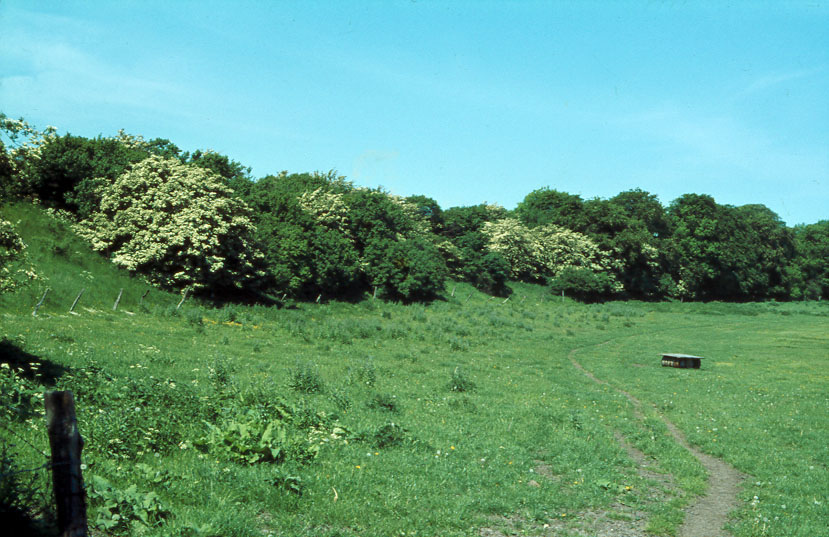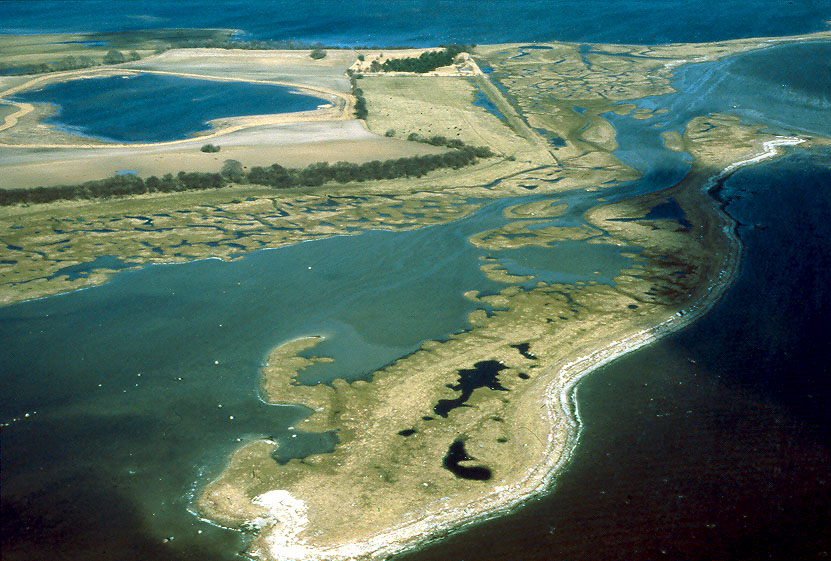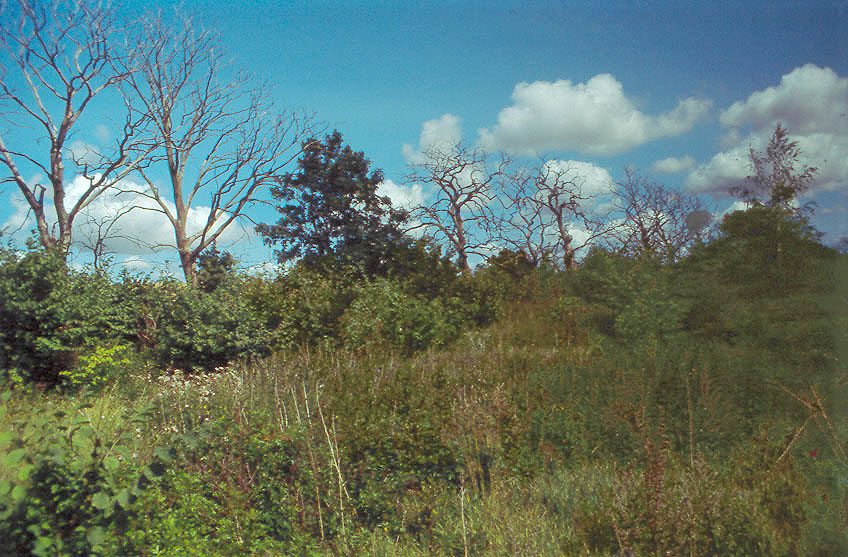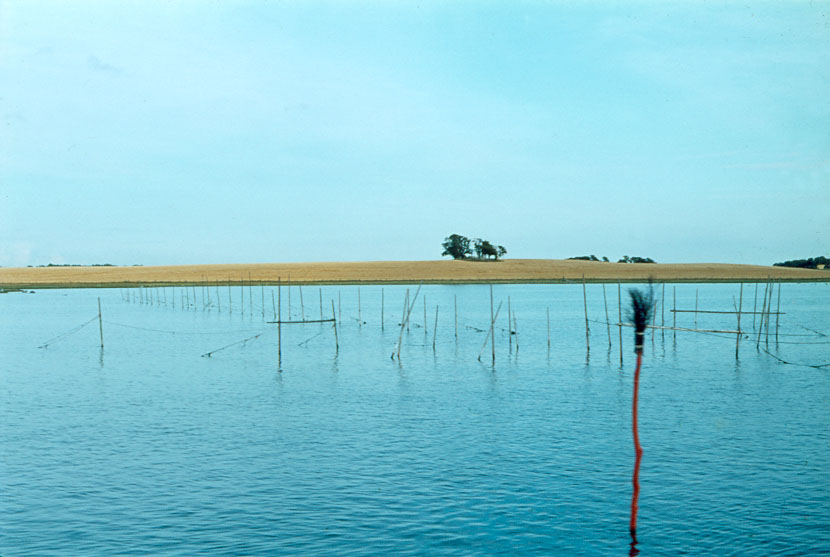Eskilsø
 The stone age slope separates the salt meadows from the higher parts of Eskilsø.
The stone age slope separates the salt meadows from the higher parts of Eskilsø.
Eskilsø, with its 140 hectares, is the biggest island in the fjord. By the ferry berth off Østskov there is a partially demolished farm, with a herdsman’s house. The low cliffs of an earlier coastline divide the island’s high moraine landscape from the flat salt meadows.
 The south coast of Eskilsø with its network of pools. Kværnø is in the foreground and Store Rørsø in the background..
The south coast of Eskilsø with its network of pools. Kværnø is in the foreground and Store Rørsø in the background..
There are two lakes on the island – Greater- and Little Rørsø – as well as a couple of ponds and some dry marl pits. The higher part of the island was formerly used for grain crops, but it is now used for grazing, like the salt meadows. Hawthorn and roses grow on the old coastal slopes. There are also big elm trees here and in the hedges, left in ruins by Dutch elm disease.
 Ditch elm disease has killed the old elms on Eskilsø.
Ditch elm disease has killed the old elms on Eskilsø.
The ruins of a church stand at the highest point of the island. This church once belonged to the Augustinian monastery which existed briefly on the island in the first half of the twelfth century. The monastery is presumably the source of a number of plants, which were introduced by the monks.
 The ruins on Eskilsø, seen from Skovrende.
The ruins on Eskilsø, seen from Skovrende.
A large number of birds breed on the salt meadows. Almost all the fjord species are found breeding here. The waders are particularly characteristic of Eskilsø, but gulls and terns are also well represented. Since the restoration of Greater Rørsø several common species of duck have also started breeding here.
The island is big enough to have a fox population and when foxes are around the breeding birds disappear. From 1996 to 2014 foxes have been continuously present on Eskilsø - in some years with cubs – and as a result the population of breeding birds has fallen from about 1000 to just a few pairs. In the years 2011 to 2014 twenty foxes were shot on Eskilsø. Cattle graze on the island, and this is beneficial to the preservation of both plant and animal life, but it can unfortunately have a drastic effect on breeding birds when 100 or so cows trample their way through a colony. The island was formerly used for both crops and cattle, but now only for cattle. In the long term it would be appropriate to divide the island into high and low sections so that the cattle can be kept away from the salt meadows during the birds’ breeding season. In autumn and in mild winters large numbers of ducks, geese and waders roost on Eskilsø. Birds of prey are also often seen here in autumn and winter. The white-tailed eagle is regularly seen on the island during the winter, and you might also be lucky enough to see a peregrine falcon.
There are paths for walking in some parts of the island, including one up to the church. During the breeding season (1st April to 15th July) it is forbidden to walk on the salt meadows.
Eskilsø is owned by the Struckmann Foundation, a conservation foundation set up with the money left by artist Erik Struckmann and his wife Ingrid Struckmann. Erik Struckmann was the first chairman of the Danish Society for the Conservation of Nature.
